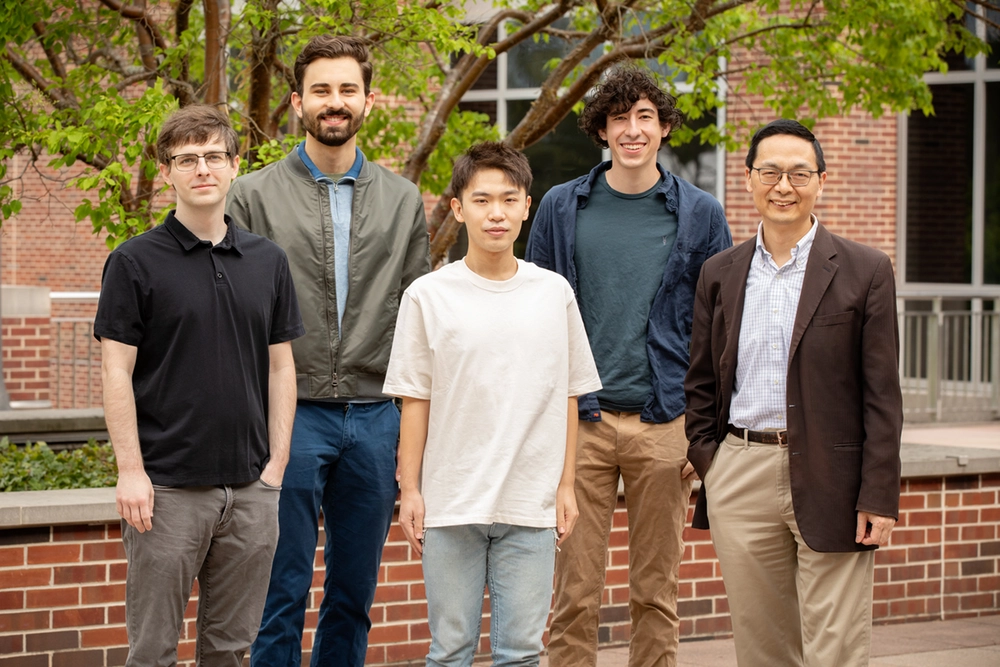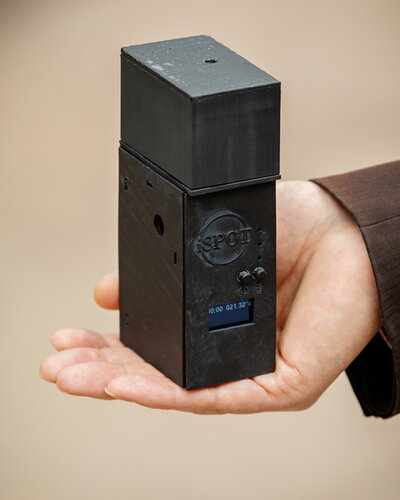
By Diana Yates, Life Sciences Editor, Illinois News Bureau
A new coronavirus test can get accurate results from a saliva sample in less than 30 minutes, researchers report in the journal Nature Communications. Many of the components of the hand-held device used in this technology can be 3D-printed, and the test can detect as little as one viral particle per 1-microliter drop of fluid.
“We developed a rapid, highly sensitive and accurate assay, and a portable, battery-powered device for COVID-19 testing that can be used anywhere at any time,” said University of Illinois Urbana-Champaign chemical and biomolecular engineering and chemistry professor Huimin Zhao, who led the research. Though it is still in the prototype stage, the device is estimated to cost less than $78 and the reagents and other materials needed for testing would amount to $6-$7 per test, the researchers found.
Current coronavirus testing technologies are complex, expensive, time-consuming and require bulky equipment and expert analysts, whereas the new device can be operated by anyone with minimal training who is careful when loading samples, Zhao said.
The innovation was made possible by the recent discovery in Zhao’s laboratory of a system for making artificial restriction enzymes that can be programmed to recognize and cleave specific genes in an organism’s genome. In the new device, these enzymes carry DNA guides that tag the viral genes of interest. The enzyme cleaves the genes, which have been tagged with a dye that fluoresces only after the genes are cut. The resulting fluorescence signals that those genes are present – a positive test result.

The new technology, called Scalable and Portable Testing, does away with the complicated process of heating and cooling each sample to get results, as many current testing protocols require. SPOT also can detect multiple genes per sample, making it more accurate than single-gene tests, which can yield incorrect or inconclusive results. Another advantage is that it utilizes saliva, which is easier to collect and less invasive than a nasal swab.
The research team tested SPOT using 104 clinical saliva samples. They found that it accurately identified 28 out of 30 SARS-CoV-2-positive samples and 73 of 74 SARS-CoV-2-negative samples.
“Based on the data reported in the literature, the accuracy of our test is comparable to or better than other SARS-CoV-2 tests,” Zhao said.
The researchers also tested SPOT with samples containing – or lacking – the influenza virus, the new coronavirus and three other human coronaviruses. It accurately identified samples containing the new coronavirus, whether or not other viruses were present in the sample.
“We are interested in exploring this technology for detection of other diseases as well,” Zhao said. “One key advantage to this technology is its multiplexing capability, so in principle, we can detect many viruses simultaneously using the same device.”
The SPOT system also may be useful for detecting genetic markers of certain types of cancer in saliva, he said.
Zhao also is a U. of I. professor of bioengineering, of chemistry, and of biomedical and translational sciences in the Carle Illinois College of Medicine. He is a faculty member in the Carl R. Woese Institute for Genomic Biology, which, together with the Steven L. Miller Chair Endowment, supports this research.